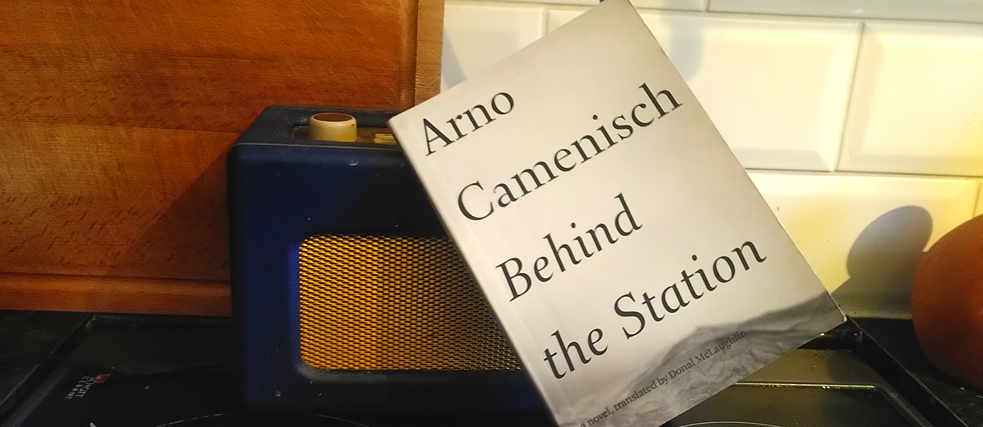November 2022
Arno Camenisch: Behind the Station

If Wioletta Greg’s novella Swallowing Mercury drew you in, you might want to add Arno Camenisch’s Behind the Station to your TBR pile.
Wioletta Greg’s haunting Swallowing Mercury is something of a touchstone for my book club. “It reminds me a little of that novella,” someone will utter every few months, “do you remember?” Longlisted for the International Man Booker in Eliza Marciniak’s sparse and lyrical translation, Swallowing Mercury follows the coming of age of a young girl in rural Poland, but avoids a linear structure in favour of dipping into scenes and moments, honing in on sometimes uncanny details.
Arno Camenisch takes a similar approach in Behind the Station (tr. Donal McLaughlin). Described as the second book in Camenisch’s Alps trilogy, Behind the Station is nonetheless a standalone novella, following the exploits of a young boy and his brother over the course of a year. The boys live in a small village (41 – or 42? – people, 25 houses, 16 fridges) in rural Switzerland, and as the year passes we see them caring for their pet rabbits, tormenting their neighbours, visiting their grandparents in hospital. As in Swallowing Mercury, the readers find themselves piecing together the jigsawed scenes which the novella unfolds one by one, in short, paragraph-length segments.
This can sometimes be a little disorientating, particularly when Camenisch chooses not to revisit storylines which feel significant or unfinished – like when the children scratch pictures onto soldiers’ cars with nails, or when the older brother comes close to drowning in an icy river. The fragmentary narration style lends itself particularly well to telling a story from the perspective of a young child though, as the boys are often in the dark as to the larger context of the adults’ goings on. It also feels reminiscent of the way childhood memories work as we grow older, with individual scenes throwing themselves into sharp relief. This style makes Behind the Station the perfect book to dip into; this isn’t a page-turner to devour in one sitting, but rather a read to return to again and again.
I particularly enjoyed Donal McLaughlin’s translation of Camenisch’s prose – the boys live in a village where the main language is Romansh, the fourth official language of Switzerland, and Camenisch weaves Swiss German and Romansh into his text. McLaughlin keeps the Romansh in the English version, with an occasional light gloss (“Just you wait, there’s going to be trouble, off to bed with you now, no supper tonight: sez la cuolpa, only yourselves to blame.”), and leans into his native Scots to replicate the Swiss German. The result is a wonderfully multilingual translation with a strong sense of place.
About the author
Annie Rutherford makes things with words and champions translated literature in all its guises. A writer, translator and events organiser, she's currently researching the possibility of setting up a Writers in Exile residency in Edinburgh, and also runs Lighthouse Bookshop's Women in Translation book group. She can spot a misplaced apostrophe at a distance of fifty yards.Reserve the English translation of Arno Camenisch’s Behind the Station in our Glasgow library.
E-Library: Borrow the original German title Hinter dem Bahnhof digitally as an audio book.
Find out more about the blog.
Book Blog Overview